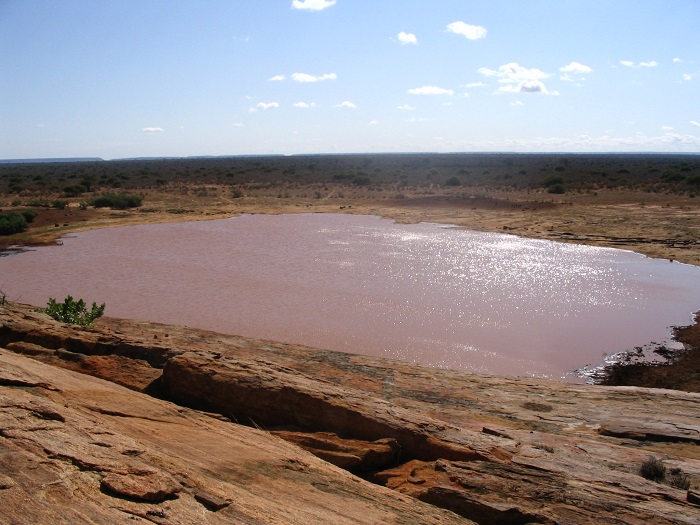Tsavo East National Park is considered to be one of the oldest and largest national parks that can be found in the Coast Province, within the southeastern part of the Republic of Kenya.
Forming one national park together with Tsavo West National Park, both parks are separated by the A109 road and railway, and they were named after the Tsavo River that flows west to east through Tsavo West, and a small part in Tsavo East which then with Athi River converges and forms the bigger Galana River.

The majority of the park is consisted of semi-arid grasslands and savanna, however, it is considered to be one of the world’s biodiversity strongholds, and its popularity is mostly due to the vast amounts of diverse wildlife that can be seen here. The park was formed as such in 1948 and operated by the Kenya Wildlife Service which maintains different tourist facilities, as well as the roads leading to the park, bridges, and the promotion of this magnificent place.

As the park is generally flat, there have been signs of inhabitants living here back to the Early Stone Age and Middle Stone Age, as some archaeological sites could be found dating from those periods. The population that inhabited the area as early as 8 century, traded ivory, catskins, and probably slaves with the Swahili inhabitants to the south, although there is no clear evidence that the area was occupied by the Swahili.

The situation was unchanged until the British and German explorers and colonizers came in 19 century, when the Orma and Watha people interacted as hostiles with them, and the colonizers put a bigger effort into colonizing the interior of Kenya by building and developing the area.

In 1898, the British started building the railway that would run through Tsavo, however, their construction was somewhat slowed when two lions started attacking their camps and construction workers, which resulted in 135 Indians and local workers falling victim to the two lions. It was Lt. Col Patterson that finally killed the two lions which allowed for the railway to be finalized and trains would run to the city of Kisumu on Lake Victoria.

This also allowed nowadays the park to be visited by many tourists and be one of the more interesting natural features that should not be missed whenever in Kenya. As the park occupies an area of some 13,747 sq km (5,308 sq mi), there are many attractions that visitors can see, such as the River Galana where different wildlife species gather, Yatta Plateau which is a relief feature that lies between the rivers Athi and Tavi characterized by plain wide valleys as well as shallow spaced valleys which were formed as a result of lava flows.

Furthermore, there are the Lugard Falls, Mubanda Rock that stands out from the rest of the park as it acts as a water catchment that supplies the natural dam below it, Aruba Dam, Kanderi Swamp, and the most important Tsavo River.

As this is an African national park, the African big 5 can certainly be seen here, and among the fauna, there are lion, black rhino, cape buffalo, elephant, leopard, yellow baboon, bushbuck, southeast African cheetah, African wild dog, several duikers, giraffe, hyena, and many other African species.

In addition, Tsavo East is home to more than 500 bird species, among which there are the black kite, crowned crane, lovebird, and sacred ibis.

As is the case with other African parks, this one too has issues with the poaching that is still present nowadays, and even though the poachers do not face serious consequences, they are being punished by the local community that lives and thrives in the park.
In conclusion, Tsavo East and Tsavo West National Parks, both significant in Kenya’s history as a site of important events, offer tourists the chance to witness the grandeur of Africa’s wildlife in their natural habitat and bask in the beauty of Kenyan nature.





